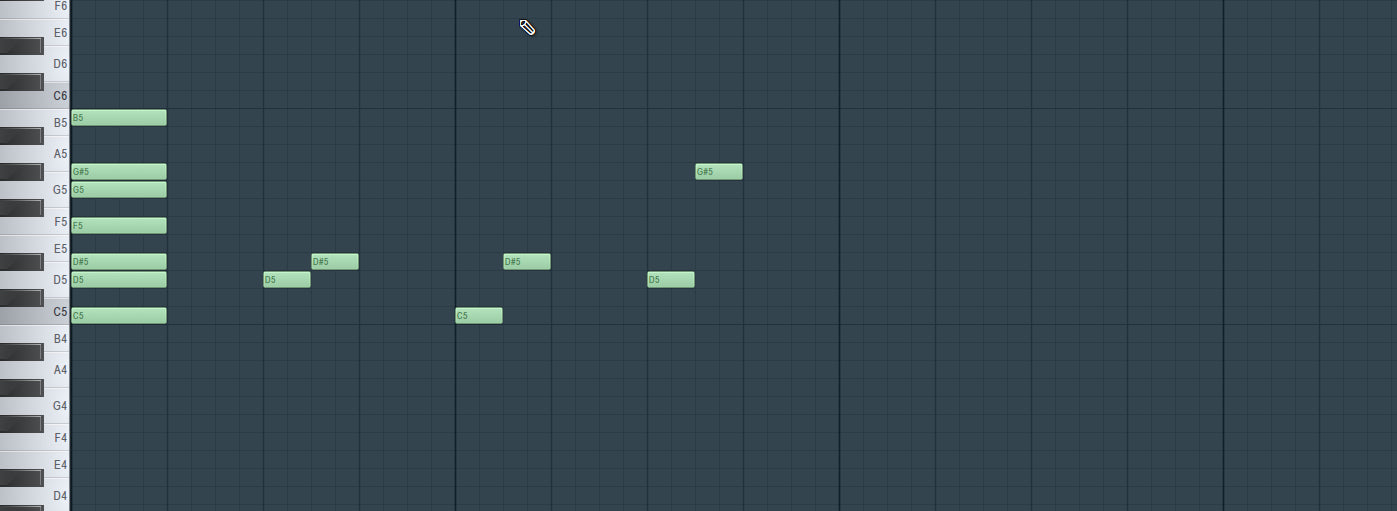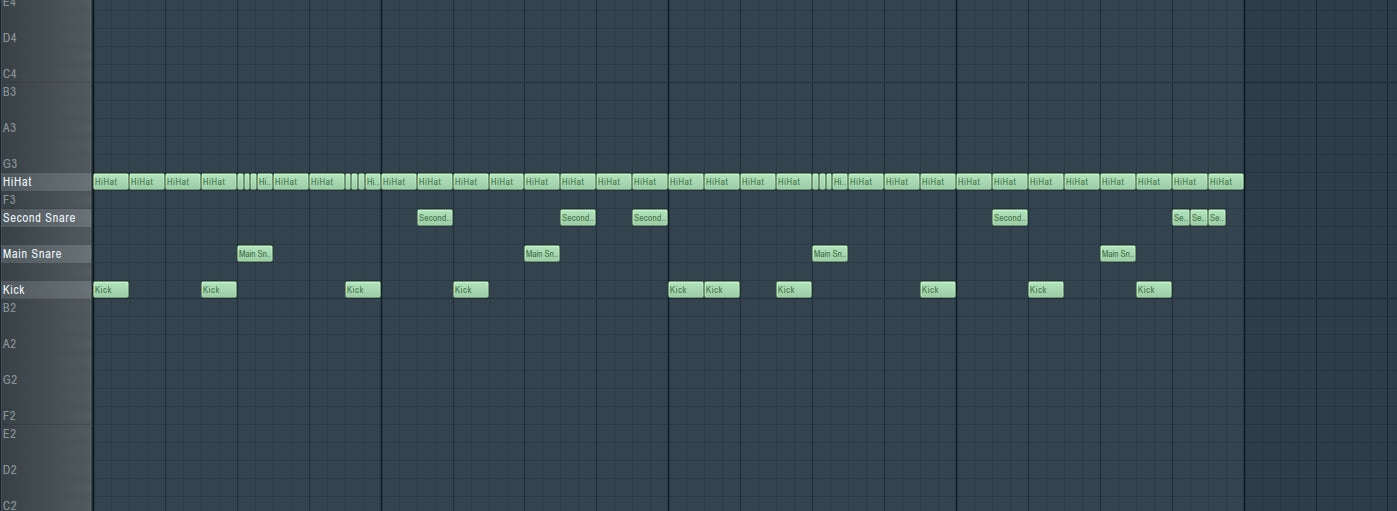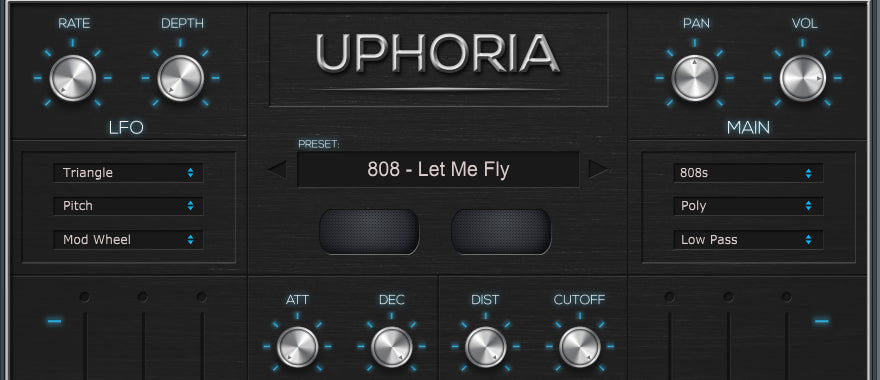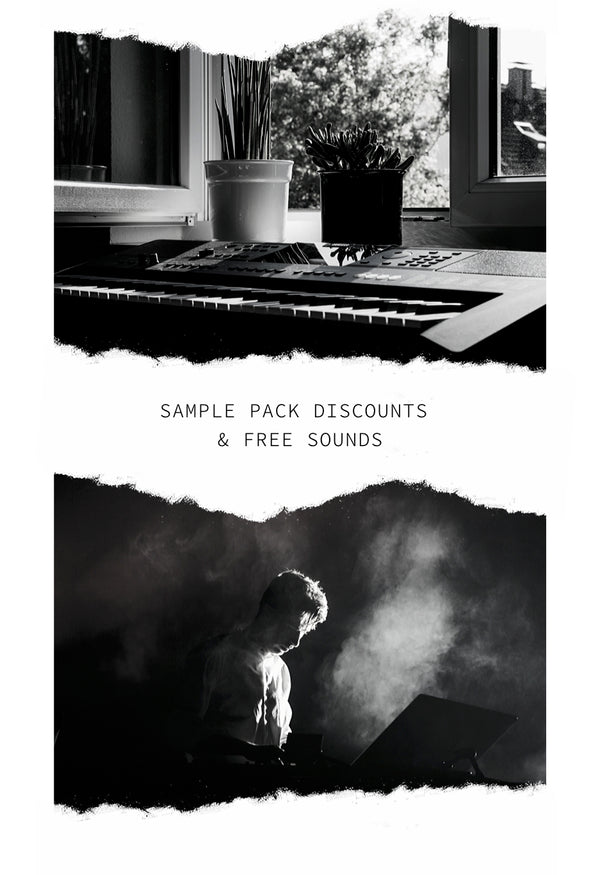Your Cart is Empty
⚠50% off code: SAMP50⚠
⚠50% off code: SAMP50⚠
⚠50% off code: SAMP50⚠
by Anders Johanson December 26, 2020 9 min read
Trap music and the beat makersanyone with a laptop and some basic music production software. The internet has played a crucial role in democratizing the music-making process, allowing aspiring artists to learn and collaborate with others from the comfort of their own homes. The distinctive sound of trap music, characterized by its heavy bass lines and aggressive lyrics, has captivated audiences worldwide. Its influence can be heard in various genres, from hip-hop to electronic dance music (EDM). Trap music has transcended its origins and become a genre that represents the cultural zeitgeist of our time. The rise of trap music has also been fueled by the success of its pioneers and trailblazers. Artists like Gucci Mane, T.I., and Young Jeezy have paved the way for a new generation of trap artists who continue to push the boundaries of the genre. Their success has not only brought mainstream recognition to trap music but has also inspired countless aspiring artists to pursue their own musical endeavors. Furthermore, the accessibility of trap music production has empowered artists to create their own unique sound within the genre. With the availability of affordable music production software and online tutorials, aspiring producers can experiment and develop their own distinct sound. This democratization of music production has allowed for a greater diversity of voices and styles within the trap music scene. In conclusion, trap music has become a cultural phenomenon that has transcended its origins and captured the attention of audiences worldwide. Its accessibility, influence, and the success of its pioneers have all contributed to its meteoric rise. As trap music continues to evolve and expand, it will undoubtedly shape the future of popular music in the years to come. beginner producersRap vocals typically take center stage in trap beats, eliminating the need for complex audio manipulation or intense build-ups. This simplicity makes it accessible for newcomers to the genre. In this article, we will explore the key elements of trap music production and offer guidance to help you create your own trap beat quickly. Let's dive in.
The response to this inquiry is not straightforward because individuals have distinct preferences for trap music. When composing instrumentals for rap artists, inquire about their top priorities in a trap beat. Depending on their taste, you will receive a diverse array of responses. Some may prioritize the track's atmosphere as it sets the mood for their lyrics. Others may emphasize the need for a memorable melody that carries the track. And there will be those who assert that the key lies in the powerful kick, the hi-hats and snare rolls, and the impactful bass.
necessary tools to implement them in our music production software. These scales will provide the dark and intense tones that are characteristic of trap beats. Choosing the right scale is crucial in creating an atmosphere that captures the listener's attention. The natural minor scale, also known as the Aeolian mode, is a commonly used scale in trap music. It has a haunting and melancholic sound that adds an eerie feel to the beat. This scale is formed by starting on the tonic note and playing the following sequence of intervals: whole step, half step, whole step, whole step, half step, whole step, whole step. Another scale frequently used in trap music is the harmonic minor scale. This scale is similar to the natural minor scale, but with a raised seventh note. The raised seventh note adds tension and creates a distinct and dark sound. The intervals for the harmonic minor scale are as follows: whole step, half step, whole step, whole step, half step, augmented second, half step. The Phrygian scale is another scale that can bring a unique and hypnotic sound to trap beats. This scale is characterized by its minor third and minor second intervals, which give it an exotic and mysterious vibe. The intervals for the Phrygian scale are as follows: half step, whole step, whole step, whole step, half step, whole step, whole step. By experimenting with these scales and incorporating their unique intervals into your trap beats, you can create a captivating and distinctive sound. So don't be afraid to explore different scales and step out of your comfort zone. Working with the right scale will elevate your trap beats and make them stand out from the crowd. StampThe FL Studio has an incredible tool that offers a convenient way to access a wide range of scales. By simply clicking on it, you are presented with an extensive list of diverse chords and scale names. Within this list, you will also find the scales that we are specifically searching for.
Working within these scales will already assist you in crafting a suitable trap melody, but it is valuable to comprehend the elements that contribute to a melody's distinct sound. As previously mentioned, trap melodies tend to possess an aggressive, menacing, and ominous quality (unless it is intended for a lively gathering). In music, there are specific melodic intervals that composers and producers utilize to evoke particular emotions. In order to create a trap melody, we need to incorporate intervals that generate tension and unease. This can be accomplished by incorporating minor 2nd, minor 3rd, and tritone intervals. If we construct the minor harmonic scale in the key of C within the FL Studio's piano roll, the minor 2nd intervals would be the intervals between D and D#, G and G#, and B and C. Put simply, if you compose a melody and discover that certain notes are separated by a half step, then you have included minor 2nd intervals within your melody. If the notes are separated by three half steps, such as C and D#, or six half steps, like D and G#, then you are working with minor 3rd or tritone intervals, respectively. While it is possible to create a suitable trap melody by ear, having knowledge of these intervals will expedite the process of achieving the desired emotional impact.

One way to gauge the pace of a trap beat or any song or beat is by looking at its tempo, measured in beats per minute (BPM). When you examine your preferred trap beat, you'll notice that the majority of them fall within the 120 to 160 BPM range. A metronome set within this range will produce rapid ticks, which is also true for most EDM genres. If you listen to a techno song with a BPM of 140, it will sound considerably more energetic compared to a typical trap beat with the same BPM. This difference in perceived speed can be quite perplexing if you're not familiar with the concepts of double-time and half-time.
"Double-time" and "half-time" are frequently used by producers when discussing the tempo of their beats. For those unfamiliar with the terminology, it may appear that these two terms have the same meaning, despite the fact that they do not.
double and halfHTML markup:
Contrasting adjectives are two words that have completely opposite meanings.
In reality, it all depends on how you perceive it.
Most trap rappers don't go beyond 100 beats per minute (BPM) when rapping.
If they do exceed this tempo, they are referred to as double-time rappers.
Typically, trap artists feel comfortable performing within the 60 to 80 BPM range.
This means that if you encounter an artist who asks for a beat at 140 BPM, you should understand that they will probably rap at 70 BPM.
In other words, their actual vocal performance will be in half-time.
Conversely, if you're working with an artist who has a better understanding of tempo and they say that their flow sounds best at 70 BPM, you will know that you need to work in double-time, which is 140 BPM.
Inside your project.
DAW.
You may still be wondering why it is preferable to double the BPM when creating trap beats. Why not simplify things and compose the beat at the same tempo as the vocals will be performed? The reason most producers choose the higher BPM is because it facilitates programming the hi-hat and snare rolls. By setting the BPM in the DAW to 140 but treating each bar as if it were only half a bar, you effectively zoom in on the piano roll grid, allowing you to create those fast hi-hat rolls without needing additional note splitting tools. This approach is much easier on the eyes and speeds up workflow, as you are working with "normal" size notes that are easier to select with your mouse, rather than tiny, hard-to-select notes.
While every trap beat has its own individuality, there are several instruments that are commonly found in this genre. So let's delve into these instruments in greater depth.
Without a doubt, each trap beat necessitates
drumsthe topic, it is important to examine
drum programming
In order to achieve success in drumming, it is crucial to comprehend the significance of establishing a strong drum foundation. By constructing the backbone or the fundamental components of the percussive rhythm, you will have a well-defined structure that allows for boundless creativity, all while avoiding the possibility of unintentionally straying into unexplored musical realms.
is commonly referred to in music notation. This change in perspective is essential to understand the concept of double-time drum programming. To create the foundation of your beat, start by programming the kick drum on every quarter note, which is now every half bar. Place the kicks evenly on beats 1, 3, 5, and 7 of the true bar. Next, add the main snare drum on beats 3 and 7 of the true bar. This will give your beat a strong backbeat. Finally, incorporate the hi-hats to add rhythm and texture. Place the hi-hats on every eighth note, which is now every sixteenth note of the true bar. You can be creative with the hi-hat patterns, but make sure they complement the kick and snare. Remember, with double-time drum programming, the bar length is not the same as the traditional four beats. It now consists of eight segments or beats. By understanding this concept and following the suggested kick, snare, and hi-hat placements, you can create a unique and dynamic foundation for your beats. FL StudioThe default setting demonstrates this to us. Nonetheless, it is crucial in our core principles that the kick drum is consistently positioned at the commencement of the initial beat in each measure. Subsequently, we position the snare drum on the third and seventh beats. Lastly, we fill in the hi-hats in such a manner that there is a hi-hat occurring every two steps. Please refer to the image provided and replicate the arrangement in your digital audio workstation if these instructions appear too theoretical.
move on to how to actually create one. Creating a trap drum foundation involves layering different elements and adding distinct effects to achieve that signature trap sound. Let's dive into the step-by-step process.
1. Start with the Kick: Choose a punchy kick sample with a solid low-end thump. Place the kick on the first downbeat of each bar to establish the rhythm and drive the track forward.
2. Layer the Snare: Layering is key in trap drums. Combine different snare samples to achieve a fuller and more dynamic sound. Experiment with snares that have different tonal characteristics, such as a tight crack and a longer tail. Place the snares on important beats, like the third beat of the bar, to add groove and energy.
3. Add Hi-Hats and Cymbals: Trap beats often feature rapid hi-hat patterns and accents. Use closed hi-hat samples for quick and tight rhythms, and open hi-hats for added variation and texture. Place them throughout the bar to create a lively and infectious groove. Don't forget to add cymbal crashes and rides for extra impact and transitions.
4. Incorporate Percussion: To add more complexity and depth to the drum foundation, introduce various percussion elements such as shakers, tambourines, and claps. These can be placed in between the main drum hits to fill in the gaps and enhance the overall rhythm.
5. Apply Distortion and Saturation: Trap drums are known for their gritty and distorted character. Apply a bit of distortion or saturation to the kick, snare, and even hi-hats to make them stand out and cut through the mix. Be careful not to overdo it and maintain clarity in the overall sound.
6. Experiment with Effects: Trap drums often utilize unique effects to create a sense of space and dimension. Experiment with reverb, delay, and panning to create interesting spatial movement and depth in the drum arrangement.
Remember, creating a trap drum foundation is just the beginning. Feel free to experiment, mix and match different samples, and add your own creative touch to make it truly unique. With practice and exploration, you'll be able to craft killer trap beats that turn heads and get people moving.
Now that we have covered the essential steps to create a trap drum foundation, it's time to put your newfound knowledge into action and start crafting your own exceptional trap beats. Let your creativity flow and have fun with the process. Happy beat-making!
get creativeand add some dynamic hi-hat and snare rolls. Your objective is to utilize the available slots within the loop to enhance the drum pattern. Currently, there are two steps between the hi-hats. To generate captivating hi-hat rolls, simply click on the designated area and program distinctive sequences of hi-hat and snare rolls.
Snap to grid tool and select noneThis will increase the level of detail in the piano roll grid. Find a specific location where you would like to include a hi-hat roll and begin populating those boxes, exploring various patterns during the process. Here is an illustrative hi-hat pattern to spark your creativity.
Once you have incorporated several hi-hat rolls, the next step in enhancing the drum loop's rhythm is to experiment with placing the kick in different positions within the loop. This will further improve the overall groove.
To add more bounce to the drums, consider using a second snare. The second snare typically has a shorter and snappier sound compared to the main snare. Its main purpose is to interact with the kick and add extra flavor to the groove.
The second snare is often responsible for the triplet rolls that are commonly found in trap beats. These rolls give the beat a distinct style.
If you want to create your own snare rolls, it is recommended to carefully select the samples and sounds that will best fit the desired style and vibe of the rhythm.
1/3 step option in the Snap to gridThe incorporation of a snare drum towards the conclusion of the drum loop will produce a commendable drum fill, serving as a brief transitional element between different parts. Take a look at the following illustration to see how your drums might appear after implementing all the aforementioned instructions.

The correlation between the trap sound and the 808 bass is extremely strong. On occasion, intense drums and a mournful 808 sub can be the sole necessities for producing a quality trap beat. Initially, the term "808" was designated to the Roland TR-808 drum machine that was unveiled in 1980. Despite the drum machine possessing various sounds such as claps and cymbals, as time went on, the label "808" evolved into a widely used descriptor for the trap sub-bass. The trap sound is intrinsically connected with the 808 bass. In certain instances, impactful drums and a 808 sub that elicits emotional response can suffice to create an exceptional trap beat. The appellation "808" originally referred to the Roland TR-808 drum machine that was released in 1980. While the drum machine encompassed several different sounds like claps and cymbals, over time, the moniker "808" became a prevalent descriptor for the trap sub-bass.
sample pack or a preset for your music production software. There are plenty of options available online, both free and paid, that offer a wide range of 808 sounds to choose from. These packs often come with pre-processed and ready-to-use sounds, allowing you to quickly add that iconic low-end punch to your tracks. Additionally, many music production software programs also include built-in 808 samples and presets, making it even easier to access and use these sounds in your music. Whether you prefer to synthesize your own 808s or use pre-made samples, there are countless ways to incorporate this iconic sound into your music.
trap sample packIf you prefer, you could opt for a VST rompler such as
or go for a VST rompler instead.
Uphoria by AngelicVibesunique sound that incorporates a wide range of 808 samples and other instruments commonly found in trap music. It is crucial to ensure that the kick and the 808 complement each other seamlessly. The kick should be impactful, concise, and powerful, while the 808 should have a longer duration, taking up the lower frequencies ranging from 40 to 80 Hz. By merging these two essential components of bass, you can successfully create a distinctive audio experience that captures the essence of sampled 808s and other trap-related instruments.
powerful low-end for your beat.

When it comes to selecting musical instruments for your band or personal use, making the right choice can make all the difference. With a wide variety of options available, it can be overwhelming to decide which instruments will suit your needs and preferences. However, taking the time to carefully consider factors such as sound quality, playability, and budget can help guide you towards making an informed decision. Whether you are a seasoned musician or just starting out, investing in high-quality instruments is crucial for achieving the best possible sound and performance. So, take your time, do your research, and select the instruments that will help you create beautiful music and bring joy to your life.
trap chord progressionsand melodies, you have a myriad of options. Many trap producers do not place significant emphasis on sound design and instead opt for utilizing romplers, which are VST plugins containing extensive libraries of sampled sounds. Notably, the romplers that are highly favored within the trap music genre include
Omnisphere 2 by Spectrasonics, ReFX Nexus, and ElectraX by Tone2
By utilizing just one of these romplers, you can easily discover a vast array of sounds, ranging from rich pianos and majestic organs to delicate bell sounds and ethereal flutes. It may surprise you to learn that many of the pulsating trap beats that have dominated the billboard charts were crafted using these very plugins. Therefore, it is important to not underestimate their power and incorporate them into your productions without hesitation. What has proven effective for the industry professionals will undoubtedly be beneficial for you as well.

Unique version: In the realm of trap beats, a proper arrangement includes an introduction, a few verses, choruses, and an ending. Typically, a rap verse spans 16 bars, while a chorus covers 8 bars. As for the introduction and ending, their length can vary, lasting anywhere between 4 to 8 bars. In the case of working with a double-time BPM, it's important to note that each vocal performance bar necessitates two bars of instrumental accompaniment. This means that within your digital audio workstation (DAW), a verse section should consist of 32 bars, while the chorus section should span 16 bars.
You have complete control over how you organize the rhythm, and each artist will have different preferences when it comes to the structure of the rhythm. To improve your skills in arranging trap beats, a great technique is to obtain an MP3 file of your favorite trap beat and carefully examine the arrangement within your Digital Audio Workstation (DAW). By studying how professional producers arrange their tracks, you will gain valuable knowledge and also avoid creative blocks, as you will have a general understanding of the number of sections necessary to complete a track. For instance, consider this trap beat with a tempo of 162 BPM. It consists of 16 bars for the introduction, two verses with 32 bars each, three choruses that can range anywhere from 16 to 8 bars, and an outro that features a fade-out lasting approximately 12 bars.

While there is no standardized formula for creating a trap beat, there are numerous elements that are commonly present in beats of this particular genre. It is our hope that this article has provided you with fresh inspiration and valuable resources to embark on the production of your own unique compositions.
by Anders Johanson January 30, 2021 12 min read
Read Moreby Anders Johanson January 30, 2021 11 min read
Read Moreby Anders Johanson January 18, 2021 9 min read
Read More
Get exclusive voucher codes for sample packs, Receive exclusive discount codes for sample packs Get complimentary sounds delivered straight to your email inbox. Enjoy a wide variety of unique and high-quality audio files, completely free of charge. Get ready for an abundance of awesomeness! Believe it or not, we are offering complimentary audio delights, and that's not all! Trust us, we are committed to delivering gratis sound extravaganza!